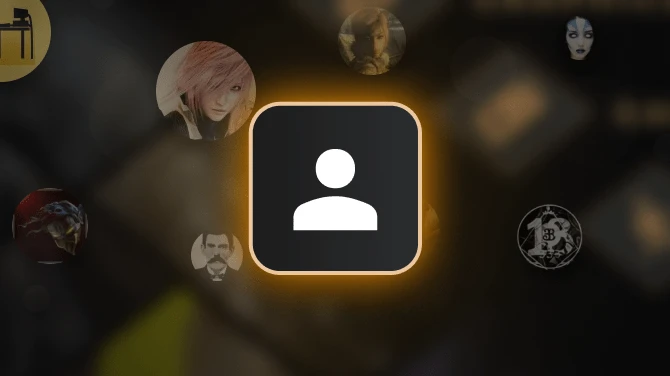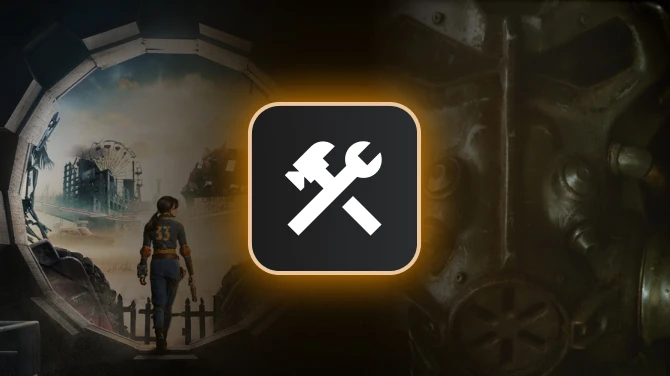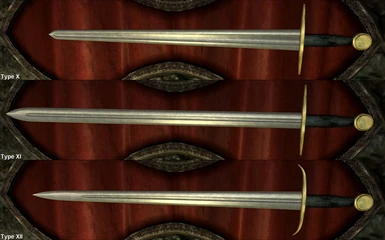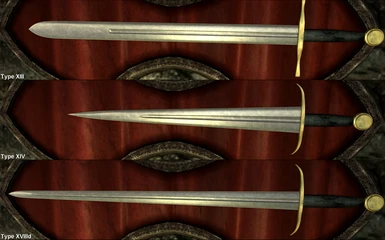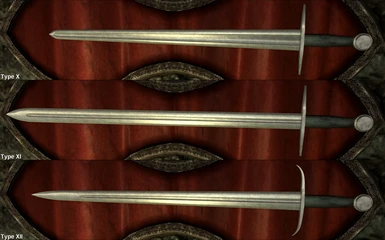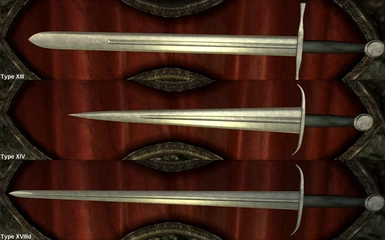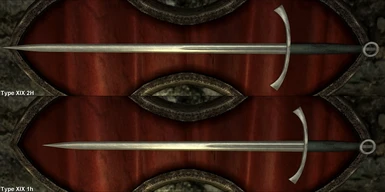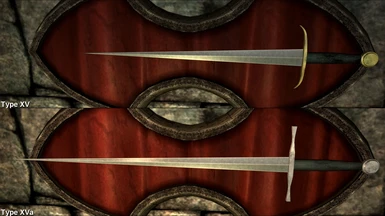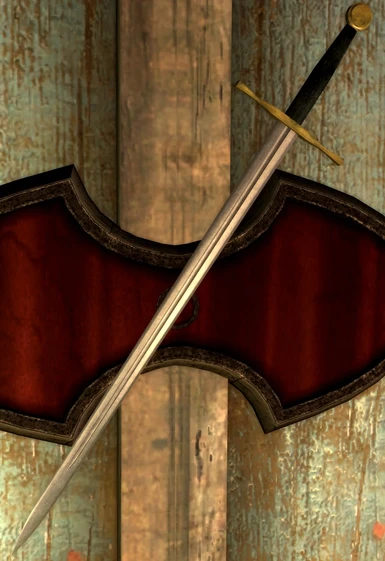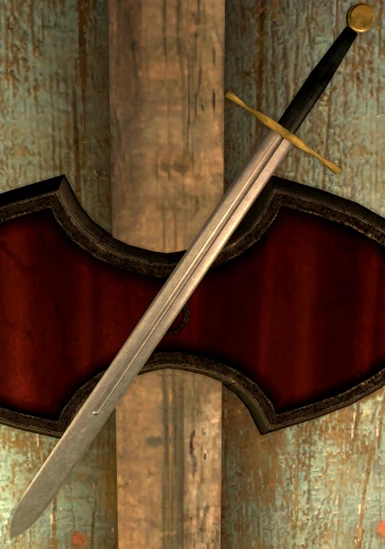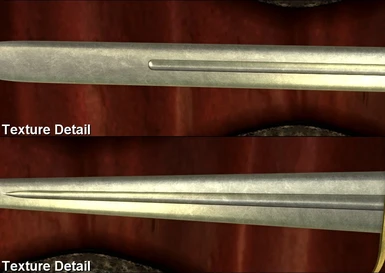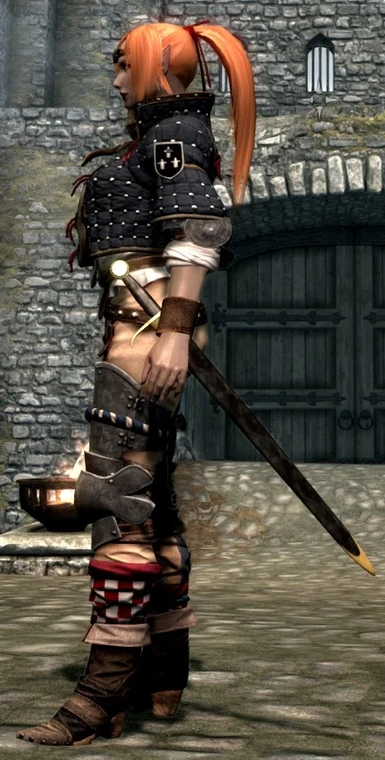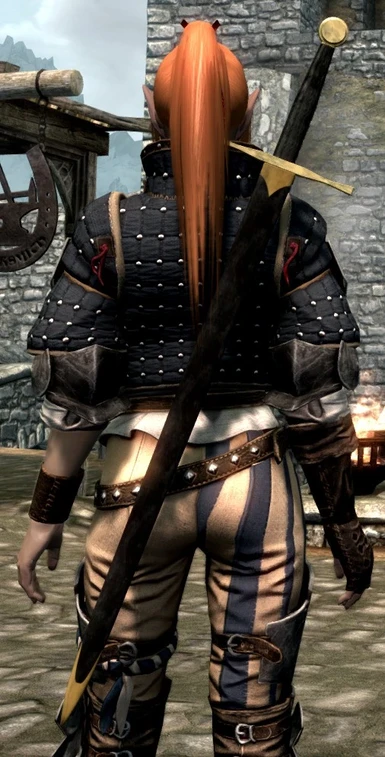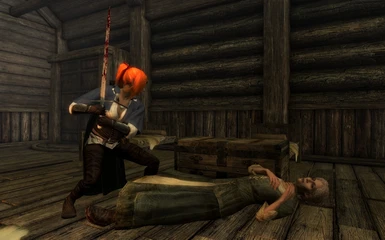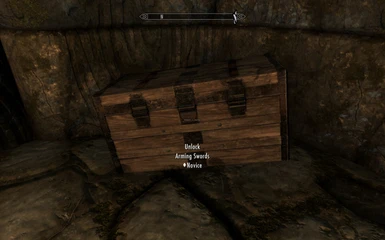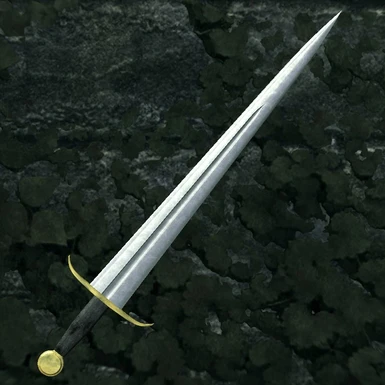About this mod
12 historically-correct European blades, because it's medieval out there ;)
- Permissions and credits
-
Translations
- Czech
It adds a couple of authentic broadswords from the European High Middle Ages, because, hey, it's medieval out there ;)
The weapons roughly equal Bethesda's similar steel weapons in weight, for balance reasons, and can be crafted and tempered as steel weapons. The single-handers are marginally better in base damage than the Akaviri Katana or the Redguard Fachion. The do double the crit bonus damage, and have double chance to crit. I.e., they ARE powerful for the early point when you can get them, but actually weaker than fairly ordinary stuff you'd find at higher levels. Ebony beats them in base damage, and Daedric beats them in any aspect.
Note that this is NOT some kind of comment on European vs Japanese swords. I like them both, and both did a fine job of killing people. I chose that point based purely on the considerations that (A) I want my weapons to still be at least competitive at the end of the game, but (B) not much more powerful than other weapons made of steel. I.e., I think it's conceivable that you can make a steel weapon a little bit better than other steel weapons, but I didn't want to exceed that so much as to end up in arguments about whether you'd absolutely need fantasy materials for that.
The two handers are balanced basically by scaling the base damage to a little less than a vanilla game two-hander would do, comparable to a single hander of the same material, but making them marginally faster. They also have slightly less reach than the other two handers. The reason is that these are more like early bastard swords (in fact, they would actually be called "bastard sword" at the time, as that was a term for a sword outside of the normal size ranges) than true two handers.
All stated types are the Oakeshott sword types, in as much as I can judge what type a sword is. Bear in mind though that swords were not made identical, and there was no such thing as buying a "Type X" sword at the time. There were thousands of smiths across a whole continent and across several centuries, and pretty much infinite variation in the swords they produced. So if my Type X is half an inch shorter than your Type X, well, please bear with me.
The hilts have dirty-ish black leather on the grip, and either
A) tarnished but shiny yellow metal on the cross and pommel. Take your pick between brass, bronze or gold-plated steel. While we don't have examples of brass hilts from the middle ages (but we do from the Renaissance), there are examples of "fire gilt" gold-plating on the hilts of swords made for nobles and kings. There is also evidence of yellow metal on hilts in contemporary art, but we do not know if it was supposed to be brass, bronze or gold. Or
B) just plain old grey shiny steel or iron.
Just choose in game which of those you want to use or craft. There is no stats difference between variants of the same weapon.
All swords have custom scabbards that exactly fit the shape of the blade. They're covered in leather, as was the case for most medieval scabbards, and have the same metal on the metal parts (e.g., the chape) as the hilts. I.e., when sheathed, the scabbard should match the hilt.
All swords can be crafted using steel, firewood (for the handle and scabbard) and leather strips.
All stated sizes are reflected in the mesh, if we assume humans to be about 5'10" tall.
The swords are:
1. Type X: Cutting sword, with a mediocre tip, very similar to the earlier Viking swords. It is very broad, with a wide and shallow fuller. This blade is about 30 inches long and a whole 2.4 inches wide at the base, but tapers to about half that before starting to converge into a tip. More commonly had a Brazil Nut pommel, though disc pommels are historical too. Norse spike-hilt cross variant.
2. Type XI: It is more slender, with parallel edges, and a better tip. It has a blade about 36 inches long (these were cavalry swords) and 1-3/4 inches wide for most of its length. More commonly had a Brazil Nut pommel, though disc pommels are historical too. Norse spike-hilt cross variant.
3. Type XII: Another tapering sword, although not as acutely as the later Type XIV, and with a very good piercing tip. It has a blade about 32-1/2 inches long. It starts 2.1 inch at the hilt, but it tapers visibly from there. The fuller is long for this type, but not ahistorical.
4. Type XIII: The Type XIII is not a continuation of Type XII, but a parallel evolution, with a different philosophy in mind. While the Type XII was evolving in the direction of becoming better at piercing, the Type XIII essentially allowed harder hits with the edge, by having a hilt long enough to allow using a second hand on the pommel if needed. I.e., these are the first European hand-and-half swords. This particular example has a 2-1/4 inch wide blade for most of its length, and about 32-1/2 inch long, and with a fairly typical fuller length for this type.
5. Type XIV: Flat blade that starts a whole 3 inch broad, but tapers strongly right from the hilt, to a very sharp tip. About 27-3/4 inches long. The single fuller is somewhat on the long side for this type, but it's still in the very historical range.
BONUS SWORDS
The mod was originally intended to be strictly Group A arming swords, but eventually it grew to include swords which are later than the high middle ages or are two-handed or both, and thus tend to not get classified as arming swords these days. They are:
6. Type XV: stiff hollow ground blade with a non-linear distal taper, that transforms from blade to spike at the tip. Starts 2.2 inch wide at the hilt. About 29 inch long blade.
7. Type XVa: a longsword version of the Type XV, with a longer and slightly narrower blade. Blade is about 36.5 inches long, and only 2 inches wide at the hilt. (Which actually makes it one of the wider ones of this type.) The tip is an even nastier spike.
8 Type XVIIId: this is kinda the mean, late medieval grandson of the Type XIV. Diamond-section blade about 35.5 inches long. It starts 2.1 inch at the hilt, but it tapers visibly from there to a nasty tip. Unlike the other Type XVIII variants, the XVIIId has a long fuller, going almost all the length of the blade. My blade is actually very slightly convex, but still mostly a diamond section blade, as some of the type XVIIId were.
9. Type XIIa: It's basically the Type XII with a 38-7/8 inch blade and a proper two-handed grip. These are early two-handed swords, of the improved piercing variety.
10. Type XIIIa: It's basically the Type XIII with a 38-7/8 inch blade and a proper two-handed grip. These are early two-handed swords, of the improved cutting variety.
11 Type XIX 2h: A late-medieval slender hand-and-half sword, with an about 36 inch hexagonal-section blade measured from tip to cross. (No historical type XIX is longer than that.) Blade starts about 1-3/8 inches broad and tapers to about 1 inch before starting to converge into a deadly tip. Fuller only runs the upper third of the blade, as usual for most historical type XIX. Typical Irish gallowglass hilt, with an open ring pommel. Loosely based on Albion's Gallowglass sword reproduction. Longer grip, to fit Skyrim's 2h animations. For the yellow metal plated version, the blade's tang, visible through the ring pommel, is still plain non-plated gray steel.
12. Type XIX 1h: Same sword as above, but converted to a one-hander with a shorter grip (though you could realistically still grab the pommel with your left hand) and only 33 inch long blade.
RETEXTURING AND MODDING
As most of my mods, it's designed for ease of retexturing, so the textures are separate pieces, and the mapping such that you can just swap in some other material. Essentially, if you have any other photo of a metal surface, as long as it's a power of 2 in pixels for width and height (256, 512, 1024, 2048 or 4096), you can just swap it in and have a blade in the metal of your choice. Ditto for the cross. So if you want a rusty blade or a copper cross or whatever, you can help yourself.
As of 1.10 they also use a simple orthogonal projection as an unwrap, so it should pose very little trouble if you can paint a texture.
The mesh pieces are separate too, somewhat like in Neverwinter Nights 2, so if you're not affraid to copy nodes around in NifSkope, you can mix and match. You can swap blades, crosses, hilts, pommels, etc, around as you see fit, and that includes pieces from my other weapon packs. Think of them as Lego swords, basically ;)
HOW TO GET IT
There is a chest with all weapons and variants down in Bleak Falls Barrow, or more specifically in the Bleak Falls Sanctum area. So, yeah, you can get it VERY early. It'll be in the round-ish room with a campfire in the middle, just as you enter Bleak Falls Sanctum, on your right. It WILL be locked, although it is a novice level lock, so you need no skill whatsoever to open it. Still, bring a lockpick or two. The crate respwans too, after a while.
Or craft them. This WILL need the steel smithing perk, since they ARE steel weapons.
Or bring up the console, type "help arming" (without the quotes) to see the ids, and give the one you want to yourself via the player.additem command.
HOW TO INSTALL IT
Extract the archive, with directories, in your "Data" folder. Select it in the list of plugin files in the launcher.
HOW TO UNINSTALL IT
Delete the .esp file from your Data directory.
Delete the MArmingSword directory in both the Meshes\Weapons and Textures\Weapons directories.
CONFLICTS
It shouldn't conflict with almost anything. It's possible that another mod places something else on top of the crate, but you should still be able to craft them or get them through the console anyway.
LICENSE
I release it in the public domain. You can do anything you wish with it. I would, of course, appreciate it if you give credit, but if not, so be it, I can live with that too.
VERSION HISTORY
1.15:
Added the type XV and XVa
1.14:
Added the 1h and 2h type XIX Irish Gallowglass swords.
1.13:
Bug fix for the two-handers having the wrong keywords
1.12:
Shinier blades. It IS supposed to be polished steel.
LESS shiny leather on the grip of the grey hilts.
Slightly better blood mesh on all swords.
1.11:
New hilts, with nicer disc pommels, thicker grips, and larger crosses
Tweaked the blade thickness again (I had forgot about the scaling inside the .nif, so now they were a little bit too thick.)
Made the scabbards a tiny little bit thicker.
Merged the iron-hilt swords into the main mod, so you can just choose in game which ones you want to use, instead of downloading a mod to a mod.
Addded the crate for people who can't or won't craft steel.
1.10:
New, better textures for all blades
New texture unwrap. No more texture and blood stretching at the tip.
Fixed the thickness to be historical (I had mis-calculated the conversion from inches to game units for thickness)
Removed the nicks in the edge, since vanilla game swords don't have those
Better looking blood on the blades
Less polygons
1.09:
There Will Be Blood! ;)
Made the folded metal texture a little bit more obvious, so maybe now I'll get less complaints about looking like plastic
1.08:
Added the two-handers
Made the grips about one third thicker. Should be more comfortable on the hands ;)
1.07:
Fixed the problem of their being shown at a wrong default angle in the crafting menu
Removed the ignoring resistances from the Type X, it was not supposed to do that
1.06:
Fixes the badly imported blade on the types XII, XIV and XVIIId (only the blade was 5% too small)
1.05:
First Skyrim release






